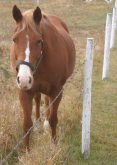The relationship between livestock production and biodiversity is complex. Livestock species, climate, geography, production method and the vast global array of wild plants and animals are only some of the variables involved in any study or assessment.
That’s what makes such a study so interesting and exciting, said Agriculture Canada senior research scientist Tim McAllister.
He chaired the Livestock Environmental Agricultural Partnership (LEAP) studies on biodiversity in the livestock sector, the report on which was released last week. LEAP is associated with the Food and Agriculture Organization of the United Nations.
Read Also

Beef check-off collection system aligns across the country
A single and aligned check-off collection system based on where producers live makes the system equal said Chad Ross, Saskatchewan Cattle Association chair.
The new report’s objective is to quantify the relationship between biodiversity and livestock production.
Now McAllister is involved in studying the relationship of livestock and biodiversity on a provincial scale. Creating greater public awareness of the positive and negative reactions between livestock and biodiversity are among the goals, as is making livestock producers more aware as well.
“They can do their own kind of recording and do their own sort of assessment. It wouldn’t probably stand up to peer review from a scientific perspective but it creates awareness, makes them aware of how their practices may interact with biodiversity and then the steps they could potentially take to try and promote that biodiversity,” said McAllister.
In the forward of the LEAP report, entitled Biodiversity and the livestock sector, some of the positives and negatives of livestock production as it relates to biodiversity are noted.
“The livestock sector is a major user of natural resources (land in particular) and an important contributor to pollution (e.g. causing nutrient losses, increasing greenhouse gas emissions), which makes it one of the sectors with the highest impact on biodiversity,” the report reads.
“At the same time, livestock production is one of the few sectors with not only negative but also positive impacts on biodiversity; therefore, the sector can pull two levers to improve its biodiversity performance — mitigate harm and maximize benefits.”
McAllister said he thinks the cattle sector has increased its understanding and promotion of biodiversity protection as an asset of cow-calf production.
In a June webinar organized by the Canadian Roundtable for Sustainable Beef, Ducks Unlimited chief executive officer Karla Guyn voiced a similar view.
“I’ve continued to be surprised at the disconnect between consumers and not understanding the role that the cattle industry has in grassland conservation and biodiversity conservation,” said Guyn.
“Simply put, the actions that impact cattle, grasslands, wetlands and wildlife all go hand in hand and without a successful beef industry, conservation in Canada will not continue at the rate or at the scale at which it is so desperately needed.”
The LEAP document on biodiversity released last week notes the benefits of good livestock management and the cost to biodiversity should good management be lacking.
“Inappropriate management practices can occur in both low-input extensive (e.g. overgrazing, abandonment) and high-input intensive (e.g. off-farm feed produced in simplified landscapes, nutrient pollution due to animal density) systems and will determine impacts on biodiversity per unit of livestock product. In addition, several indicators can reflect negative impacts of extensive systems on biodiversity (e.g. soil erosion, degraded soil, livestock density).”

















